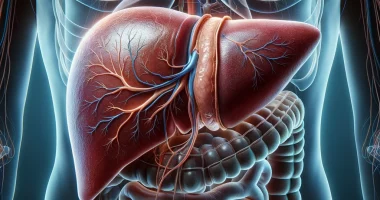Pleural empyema
Definition
Pleural empyema is an inflammation of the pleural sheets, accompanied by the formation of purulent exudate in the pleural cavity. Pleural empyema runs with chills, persistently high fever, profuse sweating, tachycardia, dyspnea, and weakness. Diagnosis of pleural empyema is based on radiologic data, ultrasound of the pleural cavity, the results of thoracentesis, laboratory examination of exudate, and peripheral blood analysis. Treatment of acute pleural empyema includes drainage and sanitation of the pleural cavity, massive antibiotic therapy, and detoxification therapy; thoracostomy, thoracoplasty, and pleurectomy with lung decortication can be performed in chronic empyema.
General information
The term “empyema” in medicine usually refers to the accumulation of pus in natural anatomical cavities. Thus, gastroenterologists in practice have to deal with gallbladder empyema (purulent cholecystitis), rheumatologists – with empyema of joints (purulent arthritis), otolaryngologists – with empyema of sinuses (purulent sinusitis), neurologists – with subdural and epidural empyema (pus accumulation under or above the dura mater). In practical pulmonology, pleural empyema (pyothorax, purulent pleuritis) is an exudative pleuritis with an accumulation of purulent effusion between visceral and parietal sheets of pleura.
Causes
In almost 90% of cases, pleural empyemas are secondary in origin and develop at the direct transfer of purulent process from the lung, mediastinum, pericardium, chest wall, and subdiaphragmatic space.
1. Most commonly, pleural empyema occurs in acute or chronic infectious pulmonary processes:
- pneumonia,
- bronchiectasis,
- lung abscess,
- gangrene of the lung,
- tuberculosis,
- a suppurative lung cyst,
- spontaneous pneumothorax,
- exudative pleurisy, etc.
2. Metastatic empyema of the pleura is caused by the spread of infection by hematogenous or lymphogenous route from distant purulent foci (for example, in acute appendicitis, angina, sepsis, etc.).
3. Posttraumatic purulent pleurisy is usually associated with lung trauma, chest wounds, and esophageal rupture.
4. Postoperative pleural empyema can occur after resection of the lungs and esophagus, cardiac surgery, and other operations on the organs of the thoracic cavity.
Pathogenesis
Three stages are distinguished in the development of pleural empyema: serous, fibrinous-purulent, and fibrous organization.
- The serous stage proceeds with the formation of serous effusion in the pleural cavity. Timely antibacterial therapy allows for the suppression of exudative processes and promotes the spontaneous resorption of fluid. In the case of inadequately selected antimicrobial therapy, the growth and multiplication of purulent flora in the pleural exudate begins, leading to the transition of pleurisy to the next stage.
- Fibrinous-purulent stage. In this phase of pleural empyema, due to an increase in the number of bacteria, detritus, and polymorphonuclear leukocytes, the exudate becomes turbid and purulent. Fibrinous plaque is formed on the surface of the visceral and parietal pleura. There are loose and then dense adhesions between the pleural sheets.
- Stage of fibrous organization. Dense pleural adhesions form, restraining the compressed lung. Over time, the non-functioning lung tissue undergoes fibrotic changes, developing pleurogenic cirrhosis.
Classification
Depending on the pathogenetic mechanisms, pleural empyema is distinguished:
- parapneumonic (developed in connection with pneumonia),
- postoperative
- posttraumatic.
According to the duration of the course, pleural empyema can be acute (up to 1 month), subacute (up to 3 months), and chronic (over three months). Given the nature of the exudate, purulent, putrefactive, specific, and mixed empyema are distinguished. The causative agents of various forms of pleural empyema are nonspecific purulent microorganisms (streptococci, staphylococci, pneumococci, anaerobes), specific flora (mycobacterium tuberculosis, fungi), and mixed infection.
According to the criterion of localization and prevalence, pleural empyemas are:
- unilateral and bilateral;
- subtotal, total, delimited: apical, paracostal (parasternal), basal (supradiaphragmatic), interlobar, paramediastinal.
By volume of purulent exudate:
- small – in the presence of 200-500 ml of purulent exudate in the pleural sinuses;
- medium – with an accumulation of 500-1000 ml of exudate, the boundaries of which reach the corner of the scapula (VII intercostal space);
- large – when the amount of effusion is more than 1 liter.
Pyothorax can be closed (not communicating with the environment) and open (in the presence of fistulas – bronchopleural, pleurocutaneous, pleuropulmonary, etc.). Open pleural empyema is classified as pyopneumothorax.
Symptoms of pleural empyema
Acute pyothorax manifests with the development of chills, persistently high (up to 39 ° C and above) temperature, profuse sweating, increasing dyspnea, tachycardia, cyanosis of the lips, acrocyanosis. Sharp endogenous intoxication: headaches, progressive weakness, lack of appetite, lethargy, apathy.
There is an intense pain syndrome on the affected side; stabbing pain in the chest increases with breathing, movement, and coughing. Pain may irradiate to the scapula and upper half of the abdomen. In closed pleural empyema, the cough is dry in the presence of bronchopleural communication, with the separation of large amounts of stinking purulent sputum. Patients with pleural empyema are characterized by a forced position—half-sitting with support on the arms behind the body.
Diagnosis
Recognition of pyothorax requires a comprehensive physical, laboratory, and instrumental examination. Examination of a patient with pleural empyema reveals lagging of the affected side of the chest when breathing, asymmetric enlargement of the chest, dilation, flattening, or bulging of the intercostal spaces. Typical external signs of a patient with chronic empyema of the pleura are scoliosis with a curve of the spine to the healthy side, drooping shoulder, and protruding scapula on the affected side.
Percussion sound on the side of purulent pleurisy is blunted; absolute percussion bluntness is determined in total pleural empyema. At auscultation, breathing on the side of pyothorax is sharply weakened or absent. The physical picture is supplemented by the data of instrumental diagnostics:
- X-ray examination. Radiography and fluoroscopy of the lungs with pleural empyema reveal intense shading. To clarify the size and shape of the drained empyema of the pleura and the presence of fistulas, pleurography with the introduction of water-soluble contrast into the pleural cavity is performed. To exclude destructive processes in the lungs, CT and MRI of the lungs are shown.
- Sonography. In diagnosing limited empyema of the pleura, there is great informativeness of ultrasound of the pleural cavity, which allows you to detect even a small amount of exudate and determine the place of pleural puncture.
- Assessment of exudate. The decisive diagnostic value in pleural empyema is attributed to the puncture of the pleural cavity, which confirms the purulent nature of the exudate. Bacteriological and microscopic analysis of pleural effusion allows us to clarify the etiology of pleural empyema.
Treatment of pleural empyema
Pleural cavity sanitation
In purulent pleurisy of any etiology, the general treatment principles are followed. Great importance is attached to early and effective emptying of the pleural cavity from purulent contents. It is achieved by drainage of the pleural cavity, vacuum aspiration of pus, pleural lavage, administration of antibiotics and proteolytic enzymes, and therapeutic bronchoscopy. Evacuation of purulent exudate reduces intoxication, lung expansion, adhesion of pleural sheets, and elimination of pleural empyema cavity.
Systemic therapy
Simultaneously with local administration of antimicrobial agents, massive systemic antibiotic therapy (cephalosporins, aminoglycosides, carbapenems, fluoroquinolones) is prescribed. Detoxification, immunoprotective therapy, vitamin therapy, transfusion of protein preparations (blood plasma, albumin, hydrolysates), glucose solutions, and electrolytes are also performed.
Physical rehabilitation
During exudate resorption, procedures are prescribed to prevent the formation of pleural fusions, such as breathing exercises, physical therapy, ultrasound, classical, percussion, and vibration chest massage.
Surgical treatment
When chronic pleural empyema forms, surgical treatment is indicated. Thoracostomy (open drainage), pleurectomy with lung decortication, intrapleural thoracoplasty, bronchopleural fistula closure, and various variants of lung resection may be performed.
All these treatment options are available in more than 530 hospitals worldwide (https://doctor.global/results/diseases/empyema). For example, Decortication can be done in 27 clinics across Turkey for an approximate price of $5.4 K (https://doctor.global/results/asia/turkey/all-cities/all-specializations/procedures/decortication).
Prognosis and prevention
Complications of pleural empyema may include bronchopleural fistulas, septic pneumonia, secondary bronchiectasis, amyloidosis, and multi-organ failure. The prognosis in pleural empyema is always severe, the lethality is 5-22%. The prevention of pleural empyema consists of timely antibiotic therapy of pulmonary and extrapulmonary infectious processes, compliance with careful asepsis during surgical interventions on the thoracic cavity, and achieving rapid lung repair in the postoperative period, increasing the body’s overall resistance.

